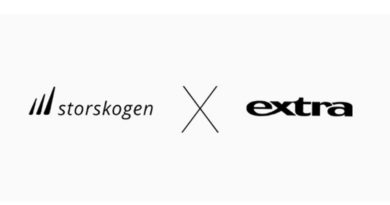Comment: How small businesses can monetise social media
By Jonathon Nunan, consultant at Better Bike Business.
To this day too few bike shops have their own website and even fewer have their own e-Commerce site. The fact is, many bicycle retailers I visit still run their stores with cash tills, price stickers and written work cards.
Yet nearly every bike shop has a Facebook page. Many will have a Twitter feed, Instagram account, Pinterest board or a LinkedIn profile. Social media is quite simply the primary way bicycle retailers connect and communicate with customers, provide information about their business and profile their products. In short, stores are using Facebook and other popular social media sites as de facto company pages and e-Commerce sites, or at least hopeful they can.
‘Social media’ platforms are primarily designed for communication, content sharing and engagement. They’re not really designed to replace e-Commerce platforms – which they don’t. Not yet anyway.
That said, for businesses, nearly all marketing and communications efforts, the end game is undeniably sales. Most businesses these days are working harder and smarter on “monetising” their social media. And the major social sites are working on helping you do exactly that.
Monetising Your Social Media – The Foundations
1. Firstly understand the purpose, functions & strengths of each social media platform.
The first thing to understand if you want to monetise your social sites is to understand each social site’s primary functions, strengths and weaknesses. Every social platform is quite different and designed to do different things well. But in general, their purpose is to help people engage, interact and be entertained or informed.
2. Adjust your content for each social media platform
If you want to convert your followers to purchasers, don’t just regurgitate the same content, in the same format, at the same time, across all your platforms. Some sites are more visual, more light-hearted, more immediate, more conversational or more business-like than others. And most of your followers will be following you on multiple platforms. Don’t bore them or disengage them because you’re lazy.
3. Don’t go straight for the money. Build a passionate audience and earn your customers’ trust and support first.
You need to play the game properly. Respect what people primarily want from their preferred social media platform. Give that to them firstly and then choose your moment carefully to ask for their business. A great example for those in the bike industry is Rapha. They spent a long time building their tribe, through focused, authentic, cultural, visual and emotional content; before they even talked products or tried selling to anyone. They were just bought by members of the Walmart family for ten times their annual turnover.
See your social media as a sales funnel; not the bucket.
4. Have a plan. At least 3-6 month ahead: across all your platforms.
Just like bike racing, it’s always good to be nimble, responsive and timely. But you never start without a plan. Always know where you want to be, when you want to be there and well ahead of time. If you’re always responding, you’re always following. You’ll be less stressed and more effective.
5. Consider using a social media management tool like HootSuite, SproutSocial or HubSpot
Tools like these are cheap to subscribe to for the basic packages that will satisfy most IBD operators. They’ll help you plan, pre-load, execute and monitor all your social media output across all platforms. Leaving you to focus on your ‘day job’ – fixing and selling bike stuff. If you’re going to ‘monetise’ your social media efforts, you firstly need the content to be engaging, well timed, targeted and consistent. But you also need to satisfy the customers you’re hopefully creating. Investing in affordable management tools like these, will win you time and make you more effective and productive.
6. Coordinate and align your content with your other marketing and sales activities
It is well known that the best way to maximise the effectiveness of your marketing and communications, is to run it in concert with all your marketing and communications channels and activities at the same time. Each gives strength to the other. It sounds obvious when you say it out loud. But like most truisms, it’s still worth pointing out all the same.
7. Regularly monitor your activity and response data.
If you’re not monitoring your social media activity and response data, you’re basically wasting your time. You wouldn’t do product orders, without firstly looking at the stock or sales reports. You’ll never know what you’re doing well and what you’re not doing well, meaning you’ll miss opportunities and likely repeat mistakes.

8. Make sure someone is in charge. All the time.
Social media is brilliant. But it’s also a living, breathing beast, that doesn’t really sleep. Keep looking after it, feeding it and making it happy and it won’t burn your house down. Make sure someone is always assigned to monitoring and managing your social media pages and ideally knows what they are doing. Otherwise, monetising your social media could quickly become the least of your concerns and you could soon be putting out fires. If you don’t have someone in the business capable of doing this, hire someone externally.
9. Understand, define and stay true to your audience
Back to Rapha again. They clearly visualised, researched, listened to and understood their audience intently. Hence they knew who they were talking to and how they should be engaged with; from language, to visuals, to topics and content in general. And they started by talking to that same person or group of people. You can’t convert a tribe to sales, if you don’t have one in the first place.
10. Proactively build and nurture your ratings and reviews
Like it or not, social media ratings and reviews matter. A lot. Proactively encourage them, ask for them and even reward or incentivise them. And if you get a bad one, always be on the front foot to respond, appease and hopefully turn that customer around; and be seen to do so. Don’t build and nurture your ratings and reviews and you will be doing whatever is the opposite of ‘monetising’ your social media.
11. Use your social pages as a customer service tool
This is really an extension of the previous point. You have their following or engagement. You hopefully have their support and their business. Use the social medium to maintain the relationship outside of the store. Not only will they see it and appreciate it, but so will your other followers. We like to spend our money with retailers who make an effort, give great service and go the extra mile.
12. Leverage your audience. Turn your customers into ambassadors and advocates and reward them for their trouble.
Pretty self-explanatory – but all the most successful brands and businesses on social media do exactly this. They actively turn their followers into influencers, recruiters and sales people. Offer them a free service, bike wash or perhaps a pair of shop socks as a thank you. The reward won’t have to be of great value, as long as the gesture of thanks is there. Enthusiastic followers will want to help convert others, as it serves to reinforce their own choices and preferences.
13. Transition your followers from online to in-store
Having lots of ‘followers’ is like having lots of credit card transactions you never put through the ePos machine. They’re just numbers and they don’t pay the bills. One of your aims with your social media content and posts is to periodically encourage your followers to come into your store and experience it first hand. We are human beings at the end of the day and we always respond better to face-to-face interactions and to tangible product experiences; such as actually picking up that pair of carbon wheels, or going for a whirl on that latest e-Bike.
14: Follow CyclingIndustry.News!
On Twitter, Facebook and Instagram, or subscribe to our bi-weekly email here. You can also follow the author of this piece here.



